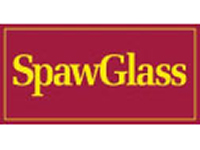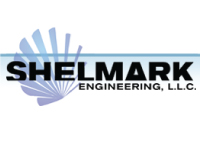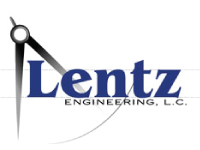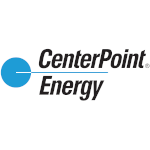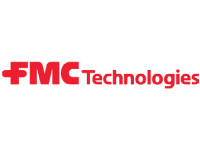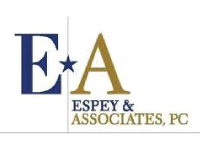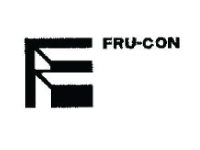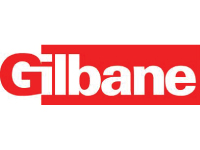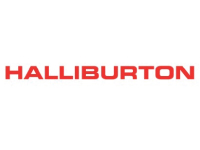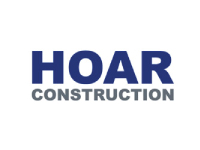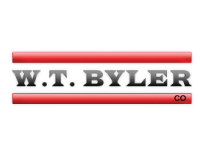Kolbe Farms
The LID solution nearly eliminated the need for a detention pond altogether and in the process gained three additional lots, or 15% more homes.
...Our mantra at Construction EcoServices is to provide the highest level of compliance at the lowest overall price. Although this sounds too good to be true, through creativity and innovation, we don’t rest until we achieve that goal. This way of thinking has led us to a suite of solutions centered around bioretention and bioswale design that focuses on ease of installation and a vast reduction in the cost of long-term maintenance. Although our approach bucks conventional thinking, the modern bioretention approach treats more stormwater and greatly extends required maintenance intervals, at a lower upfront cost. This, along with a years’ worth of maintenance and unparalleled quality control, makes the Construction EcoServices approach to design unmatched in the marketplace.
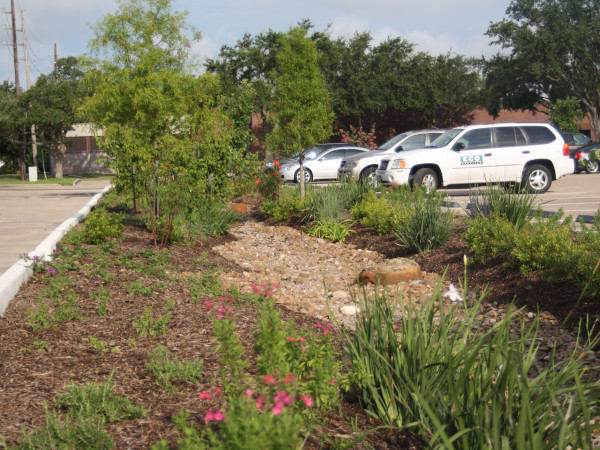


“For my clients, it is all about the economics. FocalPoint allows me to give my client a multifunctional solution that makes better use of real estate, increase lot yield and overall, generates more revenue over traditional stormwater detention pond designs. Aside from the cost savings, the end result is far more attractive that a detention basin.”
Matthew Smith
Business Development, Stormwater Systems
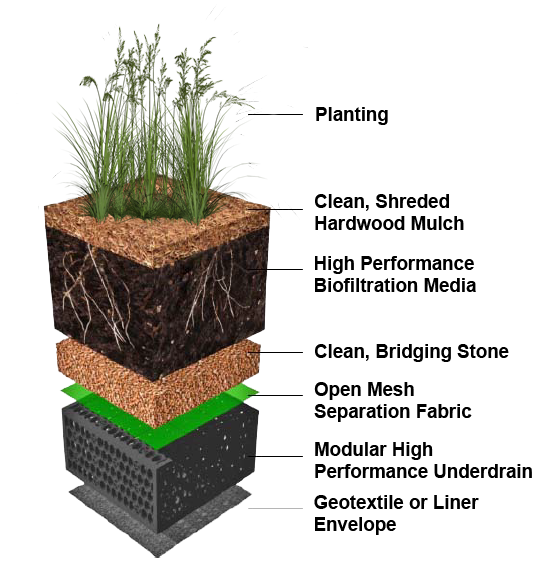 FocalPoint High-Performance Modular Biofiltration System (HPMBS) is a scalable biofiltration system which combines the efficiency of high flow rate engineered soils with the durability and modularity of a highly pervious expandable underdrain/storage/infiltration system. The modular FocalPoint HPMBS is a complete, integrated system with a demanding specification that insures functionality, performance and maintainability. With rigorous quality assurance standards and post-construction in-situ performance verification, FocalPoint HPMBS provides guaranteed performance.
FocalPoint High-Performance Modular Biofiltration System (HPMBS) is a scalable biofiltration system which combines the efficiency of high flow rate engineered soils with the durability and modularity of a highly pervious expandable underdrain/storage/infiltration system. The modular FocalPoint HPMBS is a complete, integrated system with a demanding specification that insures functionality, performance and maintainability. With rigorous quality assurance standards and post-construction in-situ performance verification, FocalPoint HPMBS provides guaranteed performance.
The FocalPoint’s modular underdrain, unlike a traditional perforated pipe, not only supports the flow rate of the media, but can be expanded beyond the footprint of the media bed to provide unlimited underground detention, infiltration and/or storage for water reuse/infiltration.
FocalPoint HPMBS gives designers maximum flexibility in meeting both water quality and volume requirements.
The system can be used in combination with traditional LID BMPs such as grassy swales and vegetated depressions. It enables implementation of green streets using urban sidewalk planters; which because of the small footprint can support designs with large trees. These systems are also used for downspout planters, replacing underground treatment systems and are an easy retrofit for failed traditional bioretention systems. FocalPoint provides unlimited application opportunities for new construction and redevelopment.
In addition, when used in conjunction with complimentary stormwater management solutions, such as bioswales, permeable pavement, and raingardens, FocalPoint creates the ability for developers, architects and engineers to decrease a property’s surface storage volume requirements and increase lot yield. Subsequently, more land can be developed, increasing long-term revenue and property value.
Although the price per square foot of FocalPoint is many times higher than traditional bioretention, the efficiency of the FocalPoint High Performance Media makes the system more than 30 times smaller, per acre treated, resulting in a 50% cost savings per acre treated. The first year’s maintenance is included in all FocalPoint HPMBS installations to ensure that the system is given the best opportunity to succeed, and low cost annual maintenance contracts are available.
Due to the efficiency of the FocalPoint media, scale is in its favor. Fulfilling equal requirements, a FocalPoint solution will use 30x less space than a detention pond solution
‘Cap & Seal’ Protection During Ongoing Construction Activity
Protecting the FocalPoint HPMBS during construction is of the utmost importance. The ‘Cap & Seal’ protection ensures a viable system regardless of the construction sequencing by sealing off the media bed until the contributing drainage area is stabilized. Solving this problem removes one of the most problematic issues in bioretention. Due to it’s small scale, FocalPoint HPMBS can be capped and sealed, allowing installation to take place early in the project construction cycle when other site utilities are installed.
We guarantee post-construction performance and we make sure your client gets it.
Performance Guaranteed with Post-Installation Verification
This hydraulic conductivity test procedure measures the entire media profile under saturated conditions to produce a reliable and accurate result.
To ensure the highest level of effectiveness, Convergent specifies that the FocalPoint HPMBS be tested within 90 days of commissioning, but no more than 270 days and we recommend the system be tested annually thereafter to provide ongoing quality assurance.
 Maintenance In Mind – Simple & Cost Effective
Maintenance In Mind – Simple & Cost Effective
The first year’s maintenance is included in all FocalPoint HPMBS installations to ensure that the system is given the best opportunity to succeed, and low cost annual maintenance contracts are available.
The potential failure for most LID/GI BMP’s is highest within the first year and success or failure is often dependent on whether the system is being properly inspected and maintained. Construction EcoServices’ commitment to system success doesn’t stop when the installation is complete.
The process to attain NJCAT verification and NJDEP certification for the FocalPoint system required laboratory testing to NJDEP Lab Filter Protocol. Alden Labs was retained by Convergent Water Technologies to carry out this detailed laboratory testing. We are pleased to announced the FocalPoint system is NJDEP Certified.
FocalPoint HPMBS was developed by Convergent Water Technologies and sold through our VAR Network. Find a VAR near you.

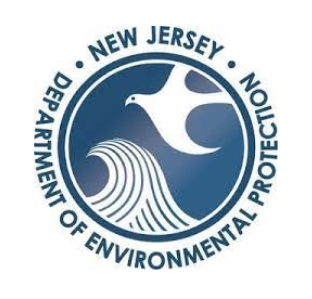
The Rhode Island Department of Environmental Management (DEM) has approved the FocalPoint High Performance Modular Biofiltration System (HPMBS). Approved technology must be designed, built, and maintained to meet the conditions specified in their technology-specific RIDEM certification letter. Pollutant removal rates assigned to the FocalPoint HPMBS include the following: 85% of total suspended solids, 30% of total nitrogen, 30% of total phosphorus, and 60% of pathogens.

The LID solution nearly eliminated the need for a detention pond altogether and in the process gained three additional lots, or 15% more homes.
...Utilizing a dry swale as the primary conveyance feature, the design team explored the various biofiltration medias available for filtering pollutants.
...The completed lot shows clients how Low Impact Development can be used to increase aesthetic appeal, and increase time of concentration and decrease peak flows.
...The primary feature that makes Bagby Street a Greenroads design is a series of biofiltration planter boxes that line both sides of Bagby street and collect stormwater runoff, storing it and filtering...
Traditional bioretention was not feasible with the limited area for treatment and long-term maintenance, leaving the engineers with a decision to use FocalPoint High Flow Biofiltration.
...The unpredictable and frequent storms, combined with clay soils, forced the design team to create a solution that would perform under extreme conditions while keeping the long-term maintenance costs...
Working with Construction EcoServices, the engineers at EHRA, Inc. rescued this project using Low Impact Development (LID).
...Located outside of the City of Houston in Fort Bend County, the single-family residential project known as Camellia is a great example of how Stormwater Multifunctional Design can benefit the community,...
Within the swales are a series of forebays that pond stormwater behind earthen berms, at the bottoms of which are 10” pipes that allow low flows through and extend time of concentration for larger...
Within the swales are a series of forebays that pond stormwater behind earthen berms, at the bottoms of which are 10” pipes that allow low flows through and extend time of concentration for larger...
Structural soil cells from Citygreen, called Stratavault, were chosen to provide 50,000 CF of soil for all the trees in the park. Stratavault is a modular design that provides structural support for...
A vacant lot next on the corner of Tchoupitoulas and Calliope was going to be a challenge to develop into a new eatery and bar in the Warehouse District. The surrounding environment isn’t the most...
Many Low Impact Development Practices were used, including bioretention, bioswales, vegetated structural roadway shoulders, permeable pavers and rainwater harvesting and reuse.
...Harris County Precinct 4 decided to go with developing their new service center as a Low Impact Development site to implement the allowable practices in the counties Low Impact Development Design Manual...
Within the swales are a series of forebays that pond stormwater behind earthen berms, at the bottoms of which are 10” pipes that allow low flows through and extend time of concentration for larger...
The engineers were able to take advantage of using Harris County’s Low Impact Development (LID) regulations by increasing the time of concentration of storm water on this site.
...The LID solution nearly eliminated the need for a detention pond altogether and in the process gained three additional lots, or 15% more homes.
...Utilizing a dry swale as the primary conveyance feature, the design team explored the various biofiltration medias available for filtering pollutants.
...The completed lot shows clients how Low Impact Development can be used to increase aesthetic appeal, and increase time of concentration and decrease peak flows.
...The primary feature that makes Bagby Street a Greenroads design is a series of biofiltration planter boxes that line both sides of Bagby street and collect stormwater runoff, storing it and filtering...
Traditional bioretention was not feasible with the limited area for treatment and long-term maintenance, leaving the engineers with a decision to use FocalPoint High Flow Biofiltration.
...The unpredictable and frequent storms, combined with clay soils, forced the design team to create a solution that would perform under extreme conditions while keeping the long-term maintenance costs...
Working with Construction EcoServices, the engineers at EHRA, Inc. rescued this project using Low Impact Development (LID).
...Located outside of the City of Houston in Fort Bend County, the single-family residential project known as Camellia is a great example of how Stormwater Multifunctional Design can benefit the community,...
Within the swales are a series of forebays that pond stormwater behind earthen berms, at the bottoms of which are 10” pipes that allow low flows through and extend time of concentration for larger...
Within the swales are a series of forebays that pond stormwater behind earthen berms, at the bottoms of which are 10” pipes that allow low flows through and extend time of concentration for larger...
Structural soil cells from Citygreen, called Stratavault, were chosen to provide 50,000 CF of soil for all the trees in the park. Stratavault is a modular design that provides structural support for...
A vacant lot next on the corner of Tchoupitoulas and Calliope was going to be a challenge to develop into a new eatery and bar in the Warehouse District. The surrounding environment isn’t the most...
Many Low Impact Development Practices were used, including bioretention, bioswales, vegetated structural roadway shoulders, permeable pavers and rainwater harvesting and reuse.
...Harris County Precinct 4 decided to go with developing their new service center as a Low Impact Development site to implement the allowable practices in the counties Low Impact Development Design Manual...
Within the swales are a series of forebays that pond stormwater behind earthen berms, at the bottoms of which are 10” pipes that allow low flows through and extend time of concentration for larger...
The engineers were able to take advantage of using Harris County’s Low Impact Development (LID) regulations by increasing the time of concentration of storm water on this site.
...
This product is exclusvely distributed by Convergent Water Technoloogy network of value-added resellers (VARs). Construction EcoServices has been a valued member of the Convergent's VAR Network since the network’s inception and currently has exclusive distribution rights for Convergent products in Texas, Louisiana and New Mexico.


“This project demonstrated the Hybrid LID/BMP System’s ability to achieve high metals and suspended solids removal consistently over two rain seasons. The average removal percentage for total and dissolved copper was 97%, total and dissolved zinc was 98%, and TSS was 95%. Over the project life, the system received minimal maintenance and only two contractor maintenance cycles were performed to replace the top three inches of mulch on the LID biofilter.”
Segment from US Navy’s Final Technical Evaluation Report
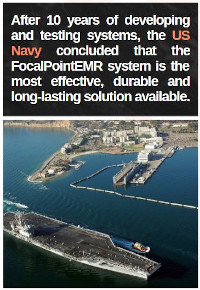 Developed by the US Navy, FocalPointEMR is a Green Stormwater Infrastructure system that eliminates harmful metals, nutrients, TSS, oil and grease from industrial site runoff.
Developed by the US Navy, FocalPointEMR is a Green Stormwater Infrastructure system that eliminates harmful metals, nutrients, TSS, oil and grease from industrial site runoff.
Most industrial facilities are under increasing pressure from regulators and local communities to protect harbors, bays, lakes, and streams by reducing the elevated concentrations of environmental pollutants commonly found within their facility’s stormwater runoff. Facilities are challenged due to intense operations with heavy equipment, multiple pollutant sources, non-porous paved surfaces and buildings, storage areas, and aging drainage and stormwater management technologies. To help solve this challenge, US Navy engineers spent 10 years and tested dozens of optional media options to develop FocalPointEMR, an LID/BMP hybrid system that decreases the concentration of toxic contaminants to meet NPDES permit requirements. In addition, the small footprint and rapid processing times of FocalPointEMR is beneficial for industrial sites where usable space is at a premium.
The FocalPointEMR system is made of seven main components, working in succession to filter out TSS, fine particles, nutrients, oil, grease and metals. Runoff initially filters through a Gabion Barrier which prevents larger trash and debris from entering the system. Runoff then enters the Biofiltration System, where the stormwater percolates down through a mulch layer, engineered media and bridging stone before it enters the modular box underdrain. Once the modular box underdrain is full, runoff flows into the secondary treatment system. Here it percolates down through activated carbon char, which absorbs heavy metals, fluorides, iron and organic molecules. Then, through FS-50, an iron enhanced activated alumina on top of the underdrain that reduces dissolved contaminants.

FocalPointEMR has full scale field verification under the Department of Defense, Environmental Security Technology Certification Program (ESTCP). In addition, the NAVFAC Engineering and Expeditional Warfare Center performed all testing and sampling protocols per the Washington State Department of Ecology’s Technology Assessment Protocol (TAPE) – Ecology and Naval Base Point Loma NPDES permit.

This product is exclusvely distributed by Convergent Water Technoloogy network of value-added resellers (VARs). Construction EcoServices has been a valued member of the Convergent's VAR Network since the network’s inception and currently has exclusive distribution rights for Convergent products in Texas, Louisiana and New Mexico.
They are the first call I make when I need cutting edge information on green infrastructure implementation options and resources and they have always been willing and able to help.
WT Byler trusts the knowledge and expertise of Construction EcoServices for Stormwater Compliance on our projects.
I believe I started using your firm back in 2004/05, and haven’t ever regretted that decision.
ECO is well organized, detailed-oriented and has remarkable responsiveness when service requests are needed. In all our diversity we depend highly on. ECO to maintain their responsibilities they have become one of our most valuable and dependable assets of our organization for over eight consecutive years.
They are the first call I make when I need cutting edge information on green infrastructure implementation options and resources and they have always been willing and able to help.
WT Byler trusts the knowledge and expertise of Construction EcoServices for Stormwater Compliance on our projects.
I believe I started using your firm back in 2004/05, and haven’t ever regretted that decision.
ECO is well organized, detailed-oriented and has remarkable responsiveness when service requests are needed. In all our diversity we depend highly on. ECO to maintain their responsibilities they have become one of our most valuable and dependable assets of our organization for over eight consecutive years.




